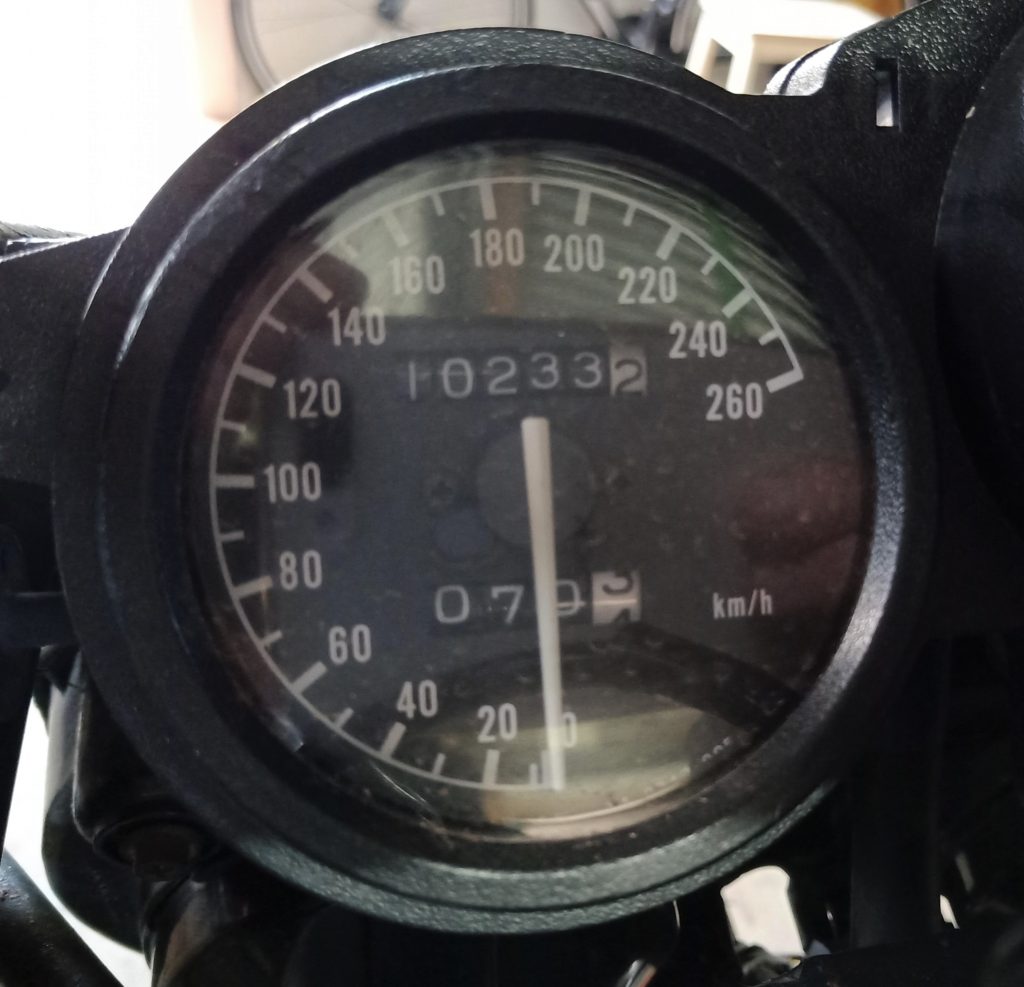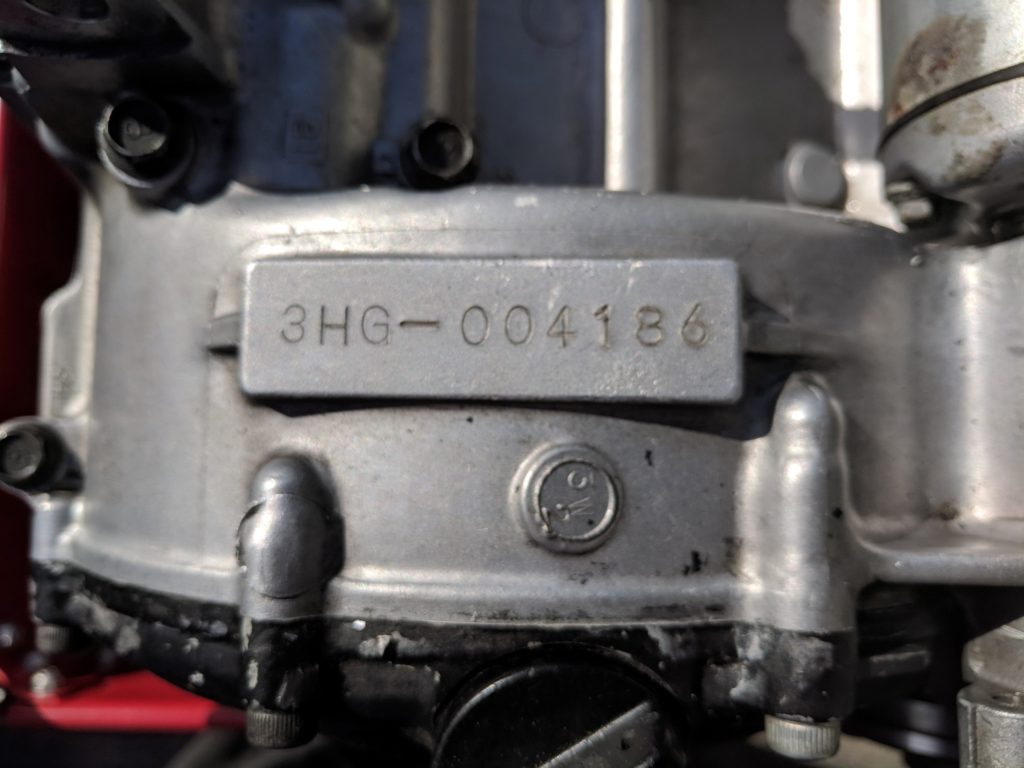The knowledge that I was now riding a bike that was roadworthy and relatively safe to ride on the road allowed me to focus on everything else that needed to be done to get it to where I wanted it.
At the heart of the matter was the engine.
Even with the output shaft no longer threatening to send the front sprocket into my left calf at high speed, locking the rear wheel in the process and having me end up in the crash barriers, there were still concerns.
I haven’t mentioned the number of kilometres the bike had done until now, and that’s for a good reason – I have no idea. The odometer shows a little over 10,000km. Now that could mean one of several things:
- It genuinely has that many km on the clock (impossible, unless they were ten of the hardest thousand km a bike has ever seen);
- It has had the gauges replaced at some stage (plausible);
- The speedo drive has been either removed or was broken for a good part of the bike’s life (also plausible); or
- The bike has been clocked (noting that it only has five digits on the odometer), and the actual km are 100,000 plus the 10,000 on the clock (very plausible).

When I bought the bike from Old Mate in Tenterfield he was, understandably, non-committal about the km and the history of the bike. His main focus in the conversations was reassuring me that it was still a ‘really good bike’ and ‘ran really well’. Quite.
Whatever the case, the engine had its ups and downs. Upside: it didn’t blow smoke, so either it had miracle rings for its age, or it had at some point had a top end (at least) rebuild. Downside: it had a rattly timing chain, not uncommon for these, and probably just a symptom of a timing chain tensioner gone floppy. Upside: it didn’t leak fluids, so that was something. Downside: a concerning, tinny rattle when the revs got up near 10,000RPM, which is considered ‘normal riding conditions’ for one of these bikes. Upside: It still ran, and yes I’m struggling with the upsides now. Downside: Loose gear changing very possibly meant that something in the transmission was worn, most likely gear selectors. Upside: ok, I’m all out. Downside: Sitting in traffic for any more than a few minutes tended to make the temperature gauge head north at a steady (if not completely alarming) rate.
Overall, it was clear that this thing needed a lot of work.
Sometimes the timing of an event just seems too coincidental to be anything more than a sign from the Great Magnet, so when one of my alerts popped up around this time letting me know that there was someone selling a second-hand FZR600 motor, the opportunity was too good to pass up.
As usual though there were some challenges:
- The engine wasn’t currently in a bike, so there was no way to know the state of the thing; and
- The engine was in Melbourne, once again the better part of a thousand kilometres from where I am.

As I’ve mentioned before, buying stuff like this is an exercise in risk management, and there are no guarantees. Talking with the seller though seemed to give at least some assurances – a little background checking showed that they were an engineer, and had worked as a race mechanic, so at least they knew what they were doing (although whether they actually did it was another matter). The history of the motor was unknown, but the serial number stamped on the motor was enough to show that it was a lot newer than the one in the current bike, most likely off one of the later Australian models of FZR600, perhaps ’92 or ’93, and in theory these should swap straight in to a ’90 setup.
In theory.
It was always going to be a risk buying a sight-unseen, second-hand motor, but the other way of looking at it was that I had not seen a single stand-alone engine for sale anywhere else in Australia for nearly a year, so this could be at the very least a good insurance policy. If it turned out for the better then this could very well be a straight swap in of a newer engine, fixing my mechanical problems in one fell swoop. If it turned out to be a dud, well, at least I’d have a second engine that one day I could rebuild or harvest for parts to rebuild the incumbent.
After some slight haggling to help me cover the transport costs to Adelaide (top marks here to Pack & Send for the door-to-door service), the engine safely made its way to my shed, ready for its new life.
And that’s when the fun really started.
Next up: Plastic fantastic (a.k.a. sweet Jesus, it’s going to cost HOW MUCH?)
